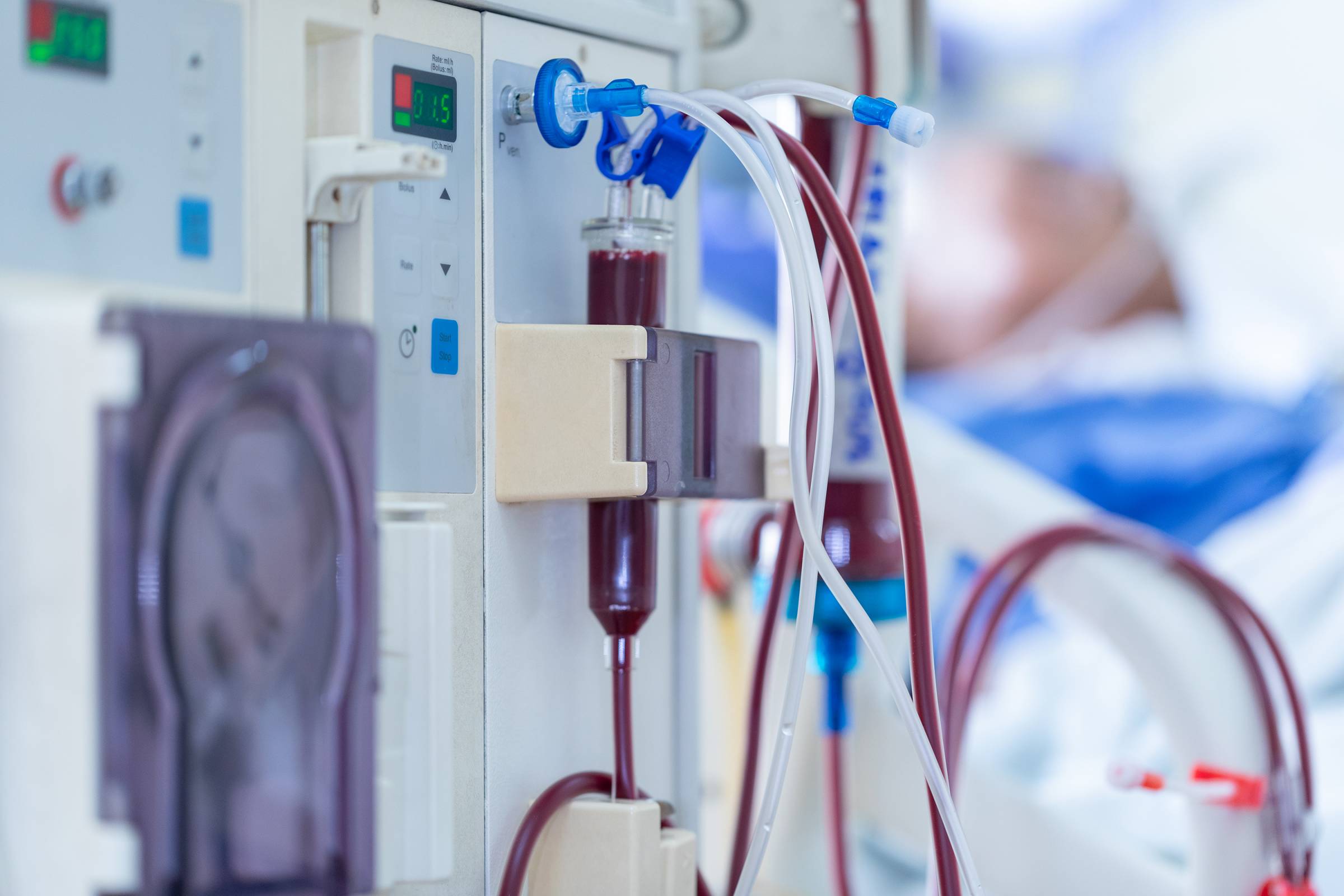
Dialysis is a treatment that rids your body of unwanted toxins, waste products, and excess fluids by filtering your blood. When your kidneys fail, your body can have difficulty cleaning your blood and keeping your system chemically balanced. Dialysis can take the place of some kidney function and, along with medication and proper care, help you live longer.
If your chronic kidney disease (CKD) reaches end-stage renal disease (ESRD), also known as kidney failure or stage 5 CKD, your kidneys no longer work to filter and clean your blood the way healthy kidneys normally do. Without treatment, life-threatening waste and toxins will accumulate in the body. At this point, dialysis treatment is needed to prolong life until you can receive a kidney transplant.
If you have conditions like high blood pressure and diabetes, you are at higher risk of kidney failure, which means you may eventually need treatment like a kidney transplant or dialysis. Dialysis removes excess fluid from the body, helping to control blood pressure. Working with your doctor to control your blood sugar and blood pressure can help keep your kidneys working longer.
Doctors use a number of kidney function tests to determine your kidney health. Most people start dialysis treatment when they have a GFR of <15, which means they have lost about 85 to 90 percent of their kidney function. Early diagnosis of CKD and regular monitoring can help keep your kidneys working as long as possible—and allow you and your doctor to plan treatment for ESRD when needed.
Kidney dialysis is a treatment that can help you live well with end-stage kidney disease.
Dialysis acts like an artificial kidney by filtering toxins, waste, and fluid from your blood through a semipermeable membrane—a material that allows fluids and small particles to flow through, but not larger particles. The two types of dialysis, hemodialysis and peritoneal dialysis, use different methods to filter toxins from your body.
With hemodialysis, the filter membrane is called a dialyzer and is located in a dialysis machine. Your blood circulates through the dialysis machine and is cleaned before it is returned to your body.
With peritoneal dialysis, the filter membrane is the natural lining of your peritoneum or abdomen and the blood never leaves your body. Both types of dialysis use dialysis solution in the filtration process to help remove unwanted substances.